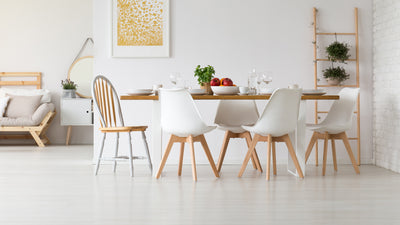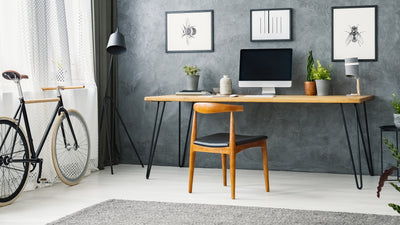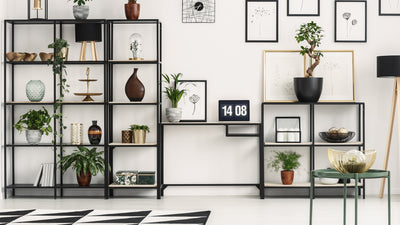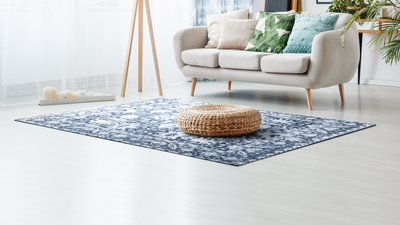How to Hide Cables on Your Wall Mounted TV
There’s nothing more disappointing than having your new and exciting flat screen tv ruined by unsightly cables, HDMI cables and other tv cords. Whilst having a wall mounted tv is a great way to make your living room look neat and tidy, tv wires sticking out from the bottom can make your space look unkept. By hiding tv cables, you help stop accidental tipping and free up much-needed space on your entertainment unit.

We can collect many tv cables behind our televisions between power cables, speakers, console cables, HDMI cords and set-top boxes. Keeping all of them under wraps can be a pain, but there are many ways to tidy up behind your television to maintain your living room aesthetic and keep your space neat and clear.
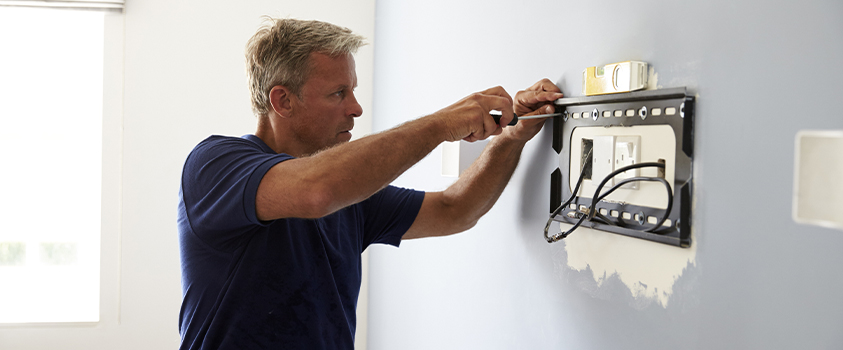
1. Hide TV Wires In Your Wall
This is the cleanest solution if you live in your own home and aren’t afraid of putting a hole in your wall. This method allows you hide wires behind a wall mounted TV by using recessed cable plates or a hidden wall cavity to completely hide all cables from sight.
Recessed cable plates are easy to install. Use a stud finder with a live wire detector to determine the safest place for your entry and exit plates. You’ll also want to measure the cables to ensure the entry and exit points are far enough apart. Use your available tools to cut a hole in the wall and install the cable plate as per the manufacturer’s instructions. Once the plates are installed you can feed through the cables and plug them back into the television.
If you're unsure about doing this yourself, many electricians can help with the process of installing a wall mounted tv. They can also help with the electrical wiring and may be a safer option if you're not feeling up to the DIY project.

2. Use Cord Clips to Hide Wires
If you're worried about making permanent changes in order to hide tv wires, there are plenty of temporary solutions. Cord clips are a cheap and easy solution to hiding cables and the best part is, they're rental friendly! Many models come with an adhesive back that you can simply stick to walls or furniture, just be sure to test the backs before the adhesive is applied to your walls, especially if you are living in a rental.
These clips may be made out of acrylic, silicone, rubber, wood or metal, and will usually hold your cords and/or hold them in place so you can run them around your home. Whilst they may not completely hide tv cords from sight, they can help make the space look more tidy. An Artiss tip is to place them directly behind your wall mounted tv and then another behind an entertainment unit directly below, so that you can straighten up any cords that run between the two.
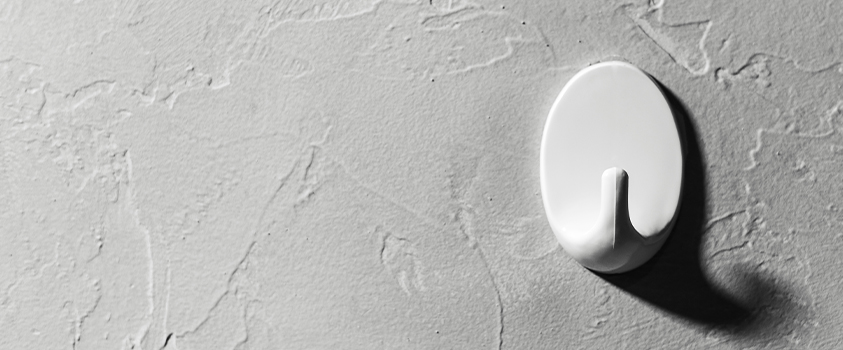
3. Use Plastic Hooks to Hide Wires
While these may or may not be specifically designed for cords, plastic hooks can function in a similar way to cord clips and will help you keep your cords out of the way yet still accessible. They are also multipurpose so that you can cut down on clutter. Plastic hooks come in various shapes and sizes and are easily purchased from your local hardware store, office supply centre, or even supermarket.
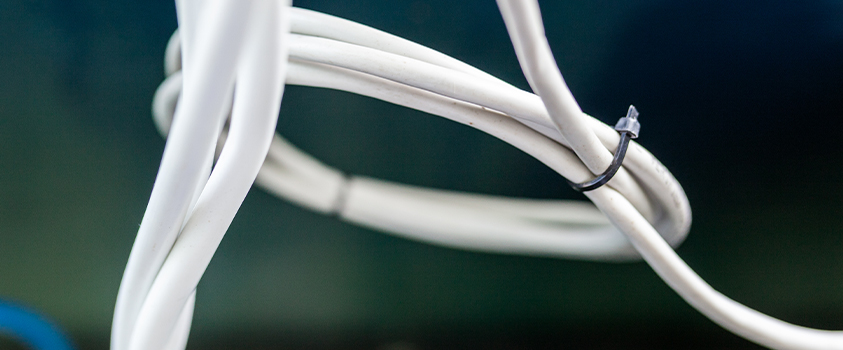
4. Use Zip-Ties to Hide Wires
Quick, easy and affordable, zip ties are a great way to keep your cables all in one place. While they’re not visually appealing themselves, cable ties will help you corral your loose ends so you can run them wherever you like - behind shelves, behind couches, around beds or over cabinets. You can use zip ties in a variety of creative and innovative ways to keep everything running smoothly, or you can use similar products such as these spiral straps, magnetic wraps, and cord ID tags.
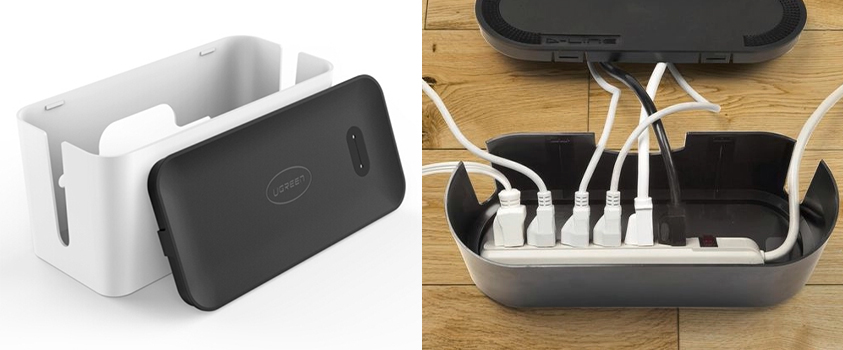
5. Buy a Cable Management Box
Cable management boxes are a simple and easy way to hide tv wires in one spot. An essential must-have to every renters cord hiding kit! You can buy a cable box in all kinds of shapes, sizes and colours to suit your needs. Simple models such as this black D-Line cable tidy box are affordable and easy to use, and will easily blend in anywhere in the home.
If you’re looking for something a little more upmarket, you can find a wide variety of cable management boxes that feature multicoloured or wood grain tops, contemporary designs, textured sides, and even built-in cradles for your devices. You can even make your own cable boxes with the right materials and a hole saw for your drill.
The best part about cable management boxes is that they don't require any adhesive or holes into walls. So if you're worried about damaging your rental in an attempt to hide tv wires, this is the solution for you!
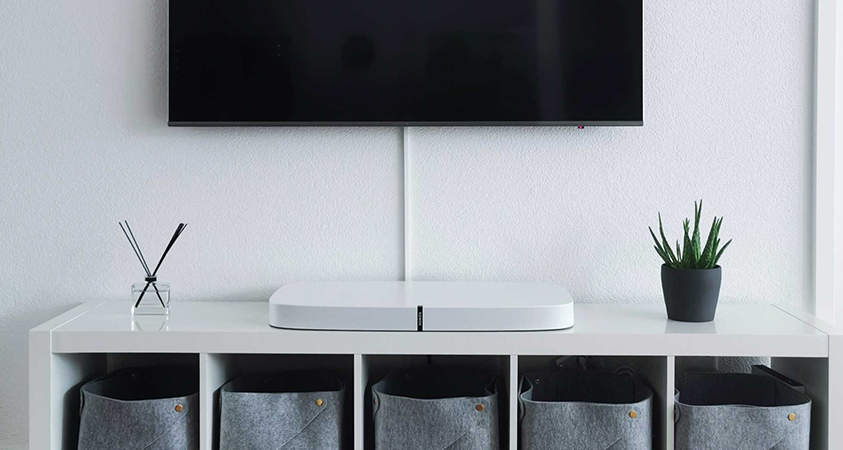
6. Hide Wires with Cable Covers
For near-seamless coverage of your cables, you can try getting a cable cover/track. These are long covers usually made from hard plastic that feature a minimalist design and can be mounted on the wall or blended with the skirting board. Best of all, you can cover these cases with paint that matches your walls, or even a contrasting colour to add a pop of visual interest to your living space.
Cord covers also come in a variety of sizes, so you're able to buy larger ones if you're looking to group all your cords together or small ones for individual cords. A cord cover is another great way to make you tv wires more discreet if you are unable to hide tv wires in the wall.
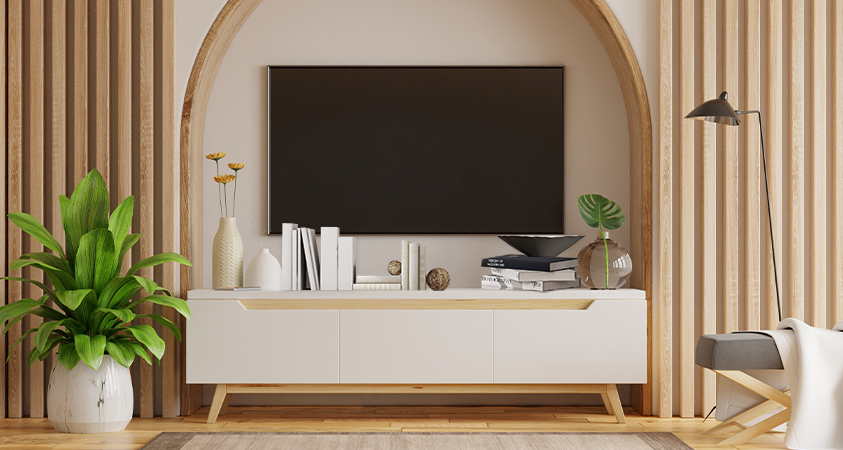
7. Disguise with Décor
There are many ways you can creatively use your existing decor to hide your cables. Do you have a pile of coffee table books you want to display in your living room? Place them underneath the television and your cables will disappear with guests none the wiser. You can buy purpose-built cable boxes designed to blend in with your decor, like these decorative hiding boxes from Covogoods on Etsy. You can run the cables behind a large vase, statuettes, paintings, a wall tapestry, or even a faux accent wall.
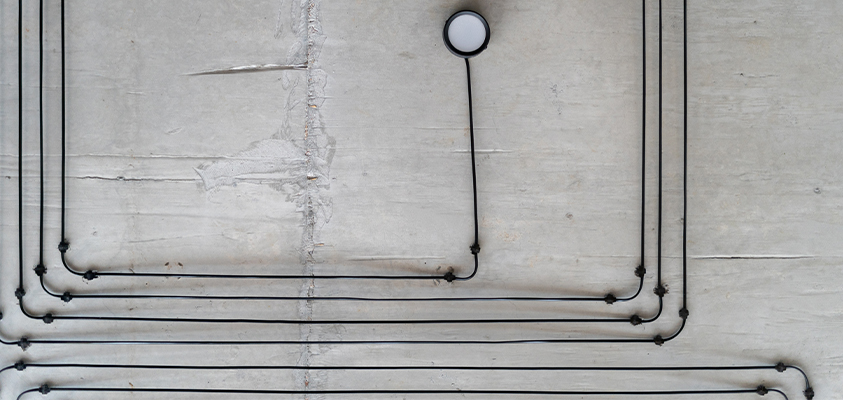
8. Feature Wires with Wire Art
Your cables don’t have to be hidden away. You can turn your existing wires into contemporary art through some creative cord placement. Using clear or unobtrusive cable clips such as these clear Command hooks, you can create all kinds of imaginative outlines. Your art can be as complicated as a city skyline, or as simple as some decorative swirls, as shown in these examples from Home Edit. Lean into a science fiction theme by mounting your consoles to the wall or a high shelf and showing off the cables. You can even decorate the wires with handmade decorations like washi tape, paper flowers and birds, lights, and even seasonal decorations.
Do’s and Don’t’s of Storing Cables
Do
Purge unwanted cables. It may be tempting to hold onto every micro-USB cord you have in case of breakage, but the more cords you own the higher your risk of getting in tangles. Many cables are cheap and easy to replace, so there’s no harm in selling, donating or recycling the ones you aren’t using.
Organise your existing cables. It doesn’t matter what you use, but keeping your cables organised will be a lifesaver when you finally need them. You can keep them separated with drawer organisers, zip ties, cord ID tags, velcro tags and many, many more organisation solutions.
Check the cable length before buying. Why would you want a 2m HDMI cable when your flat screen TV and console are only 30cm away? Additionally, cords that are too short may end up pulling on other wires or being strained in order to reach a power socket. You want to avoid getting cables that are too short and having to run multiple extension cords, which can be an electrical and tripping hazard. You can find the right length of cable for most of your charging situations, helping you cut back on clutter and keeping your cables organised.
Don’t
Wrap or tie your cables together too tightly. Doing this runs the risk of breaking the cord and pulling wires unnecessarily, especially if it is a thin cable like a phone charger.
Keep broken cables or tv wires. These can become electrical hazards when use inappropriately. Frayed or broken cables should be responsibly disposed of at your local e-waste collection.
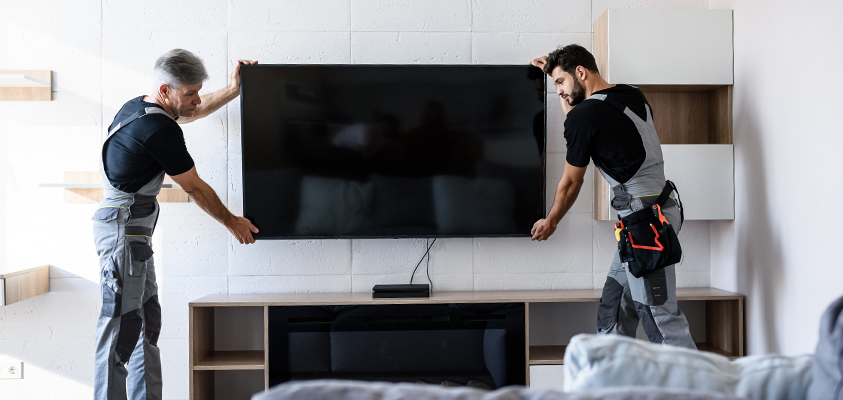
Wall mounting made easy
If you’re considering a wall-mounted tv or mounting your current television, you’ve come to the right place. We have a wide variety of TV mounts and stands that fit the universal VESA standard, meaning you find a wall mount best suited to you. Wall mounting a television is not only a space saver, but helps to keep your little family members safe. You can find out more by reading our blog, How to Mount a TV on a Wall Bracket.





